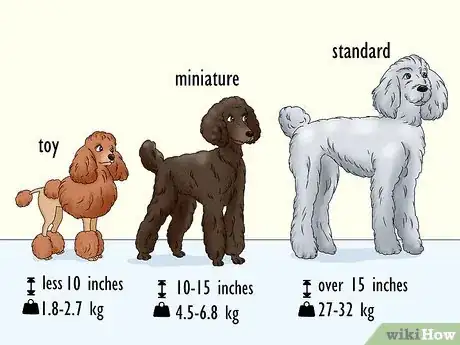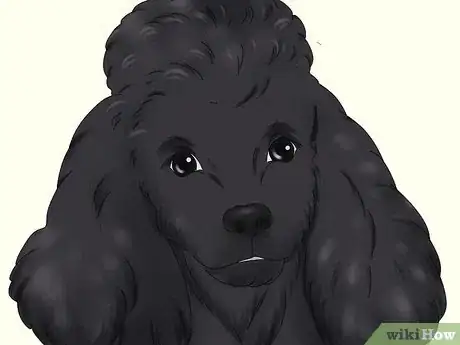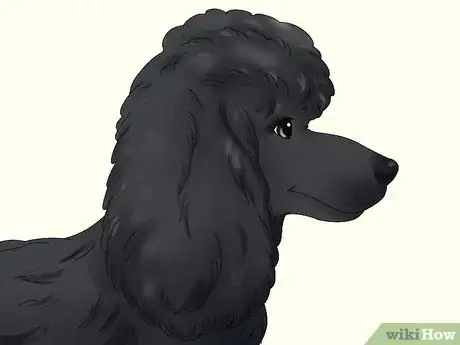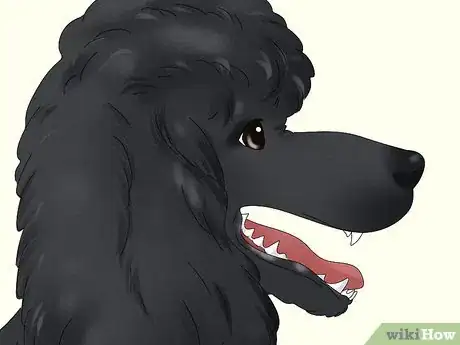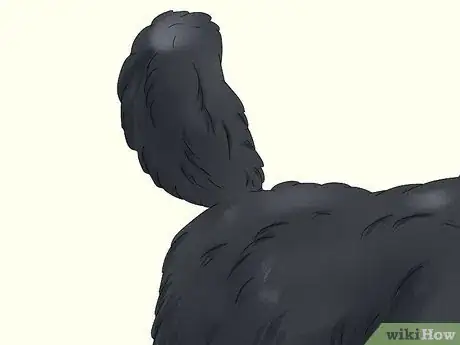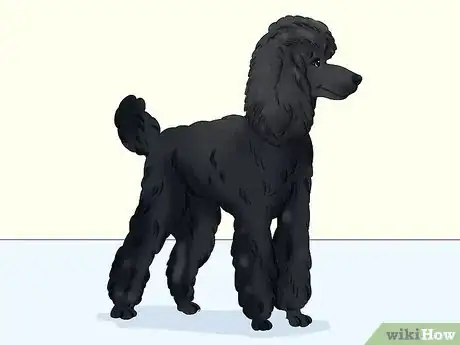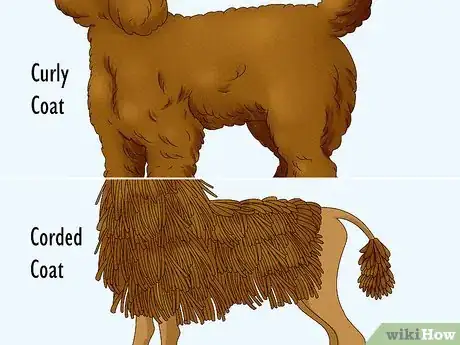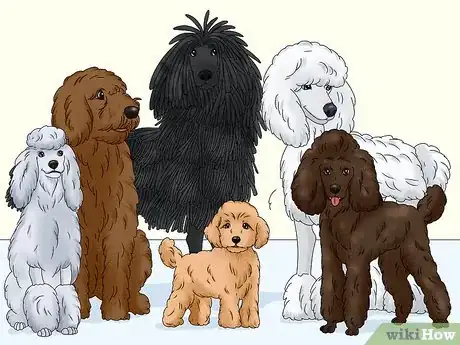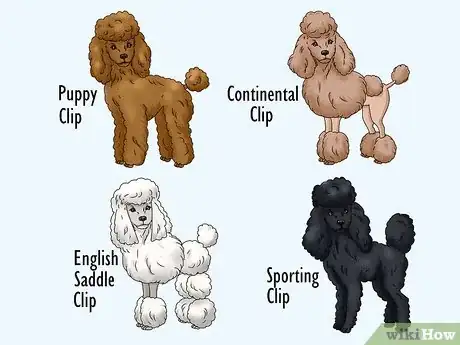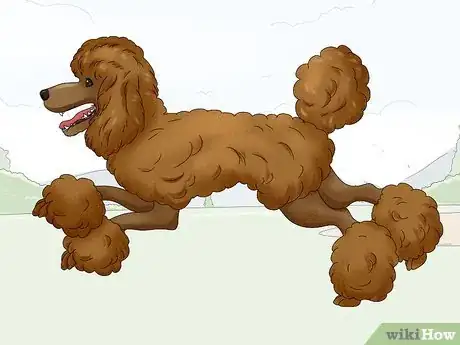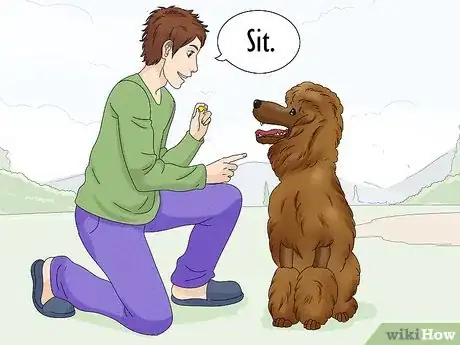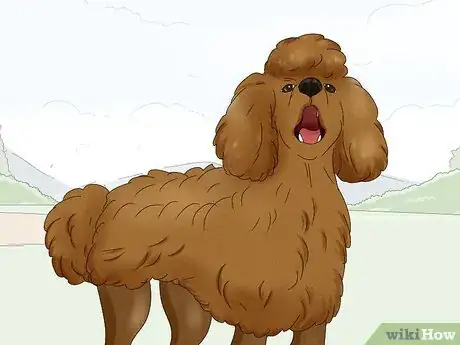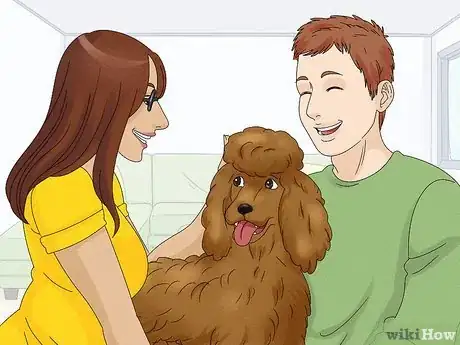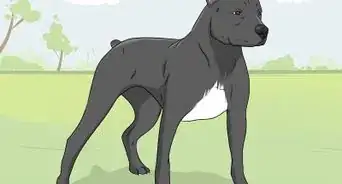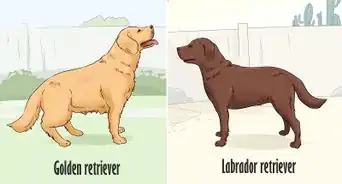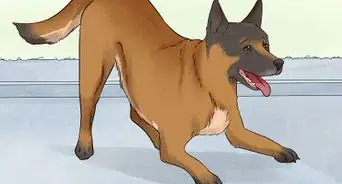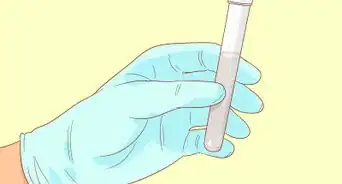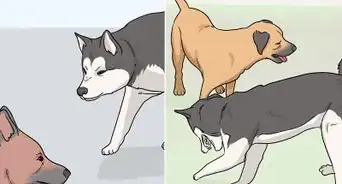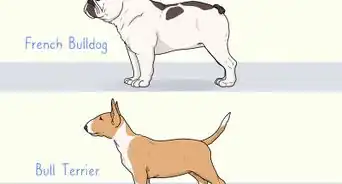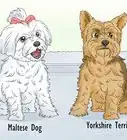This article was co-authored by Jennifer Damon. Jennifer Damon is a Professional Dog Trainer and the Owner of Love for Paws Dog Training in Richmond, VA. With over 10 years of experience training dogs, Jennifer specializes in determining the psychology that motivates dog behavior. As a supporting member of the International Association of Animal Behavior Consultants, Jennifer is passionate about improving the communication between owners and their pets through gentle, scientifically-backed methods. She holds a BFA in Communication Arts from the University of Montevallo and a Certificate in Canine Behavior Consulting from The International College of Canine Studies.
There are 7 references cited in this article, which can be found at the bottom of the page.
This article has been viewed 22,318 times.
Poodles are one of the most popular dog breeds today and are associated with concepts such as fashion and beauty. The national dog of France, this breed actually originated in Germany to hunt ducks.[1] Poodles come in three varieties: Standard (part of the non-sporting group),[2] Miniature (also in the non-sporting group),[3] and Toy (a member of the toy group),[4] but they can still be confused with other breeds. This wikiHow will help you know whether or not a dog is a Poodle.
Steps
Recognizing Body Structure
-
1Notice the size. Poodles come in three sizes: Standard, Miniature, and Toy.[5]
- Standard Poodles are over 15 inches (38 cm) in height, males weighing 60–70 pounds (27–32 kg) and females weighing 40–50 pounds (18–23 kg).[6]
- Miniature Poodles have a height of 10–15 inches (25–38 cm) and a weight of 10–15 pounds (4.5–6.8 kg).[7]
- Toy Poodles are less than 10 inches (25 cm) and weigh 4–6 pounds (1.8–2.7 kg).[8]
-
2Look at the eyes. The eyes of a Poodle are very dark and oval in shape. They are set far enough apart to give the dog an alert, intelligent expression.[9]
- Black, blue, gray, silver, cream, and white Poodles have black eye rims and very dark eyes; brown and cafe-au-lait Poodles have liver-colored eye rims and dark amber eyes; and apricot Poodles may have either, though the former is preferred.[10]
Advertisement -
3Check the ears. A Poodle has long, wide, thickly feathered ears. They hang close to the head and are set at or slightly below eye level.[11]
-
4Examine the muzzle. Poodles have long, straight, fine muzzles. They have slight chiseling under the eyes and a scissors bite.[12]
- Black, blue, gray, silver, cream, and white Poodles have black noses; brown and cafe-au-lait Poodles have liver-colored noses; and apricot Poodles may be seen with either, though the former is preferred.[13]
-
5
-
6Inspect the overall structure. As active dogs, Poodles have a well-proportioned, strong build. They are squarely built while elegant in appearance, with strong and smoothly-muscled shoulders, straight legs, and small feet that are oval in shape.[16] Poodles have a light, springy gait, moving soundly in a straightforward trot.[17]
Taking Notice of the Coat
-
1Check the appearance of the coat. Poodles have hair that may be better tolerated by people with allergies and may have either a curly or corded coat.[18]
-
2Recognize the coat color. Poodles have even, solid coats. The coat may be black, blue, gray, silver, brown, cafe-au-lait (a rich, well-saturated light brown color),[22] apricot, cream, or white.[23] These colors come in varying shades and may include somewhat darker feathering on the ears and ruff.[24]
-
3Identify the "clip". The clip is the method of trimming the coat.[25] Poodles may be seen sporting many different clips, but some that are frequently seen include the Puppy clip, English Saddle clip, Continental clip, and Sporting clip.[26] Each clip may be seen with a topknot.
- The Puppy clip appears as a long, shaped coat with a shaved face, throat, feet, and tail base and a pompon at the end of the tail.[27]
- The English Saddle clip is seen where the face, throat, feet, forelegs, and tail base are shaved, with puffs on the forelegs, a pompon on the end of the tail, and a short blanket of hair on the hindquarters except for a curved shaved area on the flanks and two shaved bands on each hindleg.[28] The rest of the coat is full but may be shaped.
- The Continental clip has a shaved face, throat, feet, and tail base, with a pompon on the end of the tail, possibly having pompons on the hips, and shaved legs that leave bracelets on the hindlegs and puffs on the forelegs.[29] The rest of the coat is full but may be shaped.
- In the Sporting clip, the face, throat, feet, and tail base are shaved, leaving a cap on top of the head and a pompon at the end of the tail, while the rest of the body and legs are clipped to follow the outline of the dog in a short blanket.[30] The hair on the legs may be slightly longer than the hair on the body.
Identifying Temperament
-
1Notice how active the dog is. Poodles are active dogs and love to play. They were bred as retrievers, so they need their daily dose of exercise, which should be about an hour every day.[31]
Did you know? Standard Poodles are the only non-sporting breed that can compete in AKC Retriever Hunting Tests.[32]
-
2
-
3See if the dog is sensitive. Being emotionally sensitive, Poodles tend to notice the feelings of the people in their household. They are sensitive to stress, so it is important to keep them feeling peaceful.[34]
-
4Take notice of attentiveness. Poodles are fairly alert and attentive, likely related to their intelligence and hunting instincts. They are quick to respond because of this and may bark.[35]
-
5Check if the dog prefers being around humans. Poodles prefer being around people rather than other dogs. They are friendly and affectionate with their family, though they may be wary around strangers.[36]
Community Q&A
-
QuestionHow can I best care for a standard poodle?
 LinnieTop AnswererMake sure to exercise them regularly to meet their activity needs. Provide a sufficient amount of food and water and brush their teeth to prevent dental issues. Brush their coat at least once a week, and trim their nails on occasion as well. Because poodles love human companionship, spend lots of time with them to form a close bond. Check out How to Care for a Poodle for more tips.
LinnieTop AnswererMake sure to exercise them regularly to meet their activity needs. Provide a sufficient amount of food and water and brush their teeth to prevent dental issues. Brush their coat at least once a week, and trim their nails on occasion as well. Because poodles love human companionship, spend lots of time with them to form a close bond. Check out How to Care for a Poodle for more tips.
References
- ↑ https://www.akc.org/dog-breeds/poodle-standard/
- ↑ https://www.akc.org/dog-breeds/poodle-standard/
- ↑ https://www.akc.org/dog-breeds/poodle-miniature/
- ↑ https://www.akc.org/dog-breeds/poodle-toy/
- ↑ https://www.akc.org/dog-breeds/poodle-standard/
- ↑ https://www.akc.org/dog-breeds/poodle-standard/
- ↑ https://www.akc.org/dog-breeds/poodle-miniature/
- ↑ https://www.akc.org/dog-breeds/poodle-toy/
- ↑ http://images.akc.org/pdf/breeds/standards/Poodle.pdf
- ↑ http://images.akc.org/pdf/breeds/standards/Poodle.pdf
- ↑ http://images.akc.org/pdf/breeds/standards/Poodle.pdf
- ↑ http://images.akc.org/pdf/breeds/standards/Poodle.pdf
- ↑ http://images.akc.org/pdf/breeds/standards/Poodle.pdf
- ↑ http://images.akc.org/pdf/breeds/standards/Poodle.pdf
- ↑ http://images.akc.org/pdf/breeds/standards/Poodle.pdf
- ↑ http://images.akc.org/pdf/breeds/standards/Poodle.pdf
- ↑ http://images.akc.org/pdf/breeds/standards/Poodle.pdf
- ↑ https://www.akc.org/expert-advice/lifestyle/hypoallergenic-breeds-poodle-schnauzer-allergies/
- ↑ http://images.akc.org/pdf/breeds/standards/Poodle.pdf
- ↑ http://images.akc.org/pdf/breeds/standards/Poodle.pdf
- ↑ http://images.akc.org/pdf/breeds/standards/Poodle.pdf
- ↑ https://www.akc.org/about/glossary/
- ↑ http://images.akc.org/pdf/breeds/standards/Poodle.pdf
- ↑ http://images.akc.org/pdf/breeds/standards/Poodle.pdf
- ↑ https://www.akc.org/about/glossary/
- ↑ http://images.akc.org/pdf/breeds/standards/Poodle.pdf
- ↑ http://images.akc.org/pdf/breeds/standards/Poodle.pdf
- ↑ http://images.akc.org/pdf/breeds/standards/Poodle.pdf
- ↑ http://images.akc.org/pdf/breeds/standards/Poodle.pdf
- ↑ http://images.akc.org/pdf/breeds/standards/Poodle.pdf
- ↑ https://www.dogtemperament.com/poodle-temperament/
- ↑ https://www.akc.org/dog-breeds/poodle-standard/
- ↑ https://www.dogtemperament.com/poodle-temperament/
- ↑ https://www.dogtemperament.com/poodle-temperament/
- ↑ https://www.dogtemperament.com/poodle-temperament/
- ↑ https://www.dogtemperament.com/poodle-temperament/
